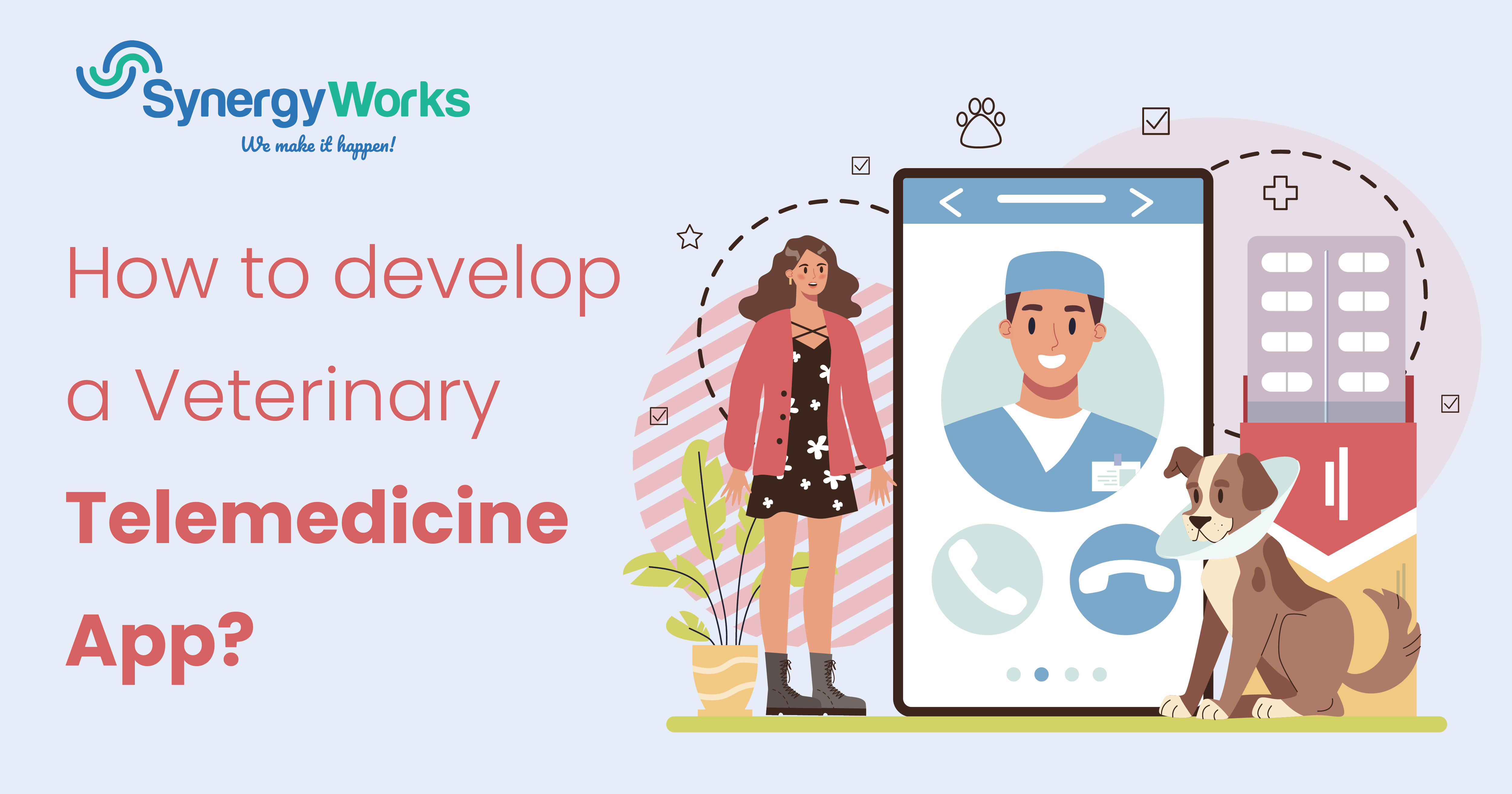In the ever-expanding digital landscape, veterinary telemedicine has emerged as a transformative force, revolutionizing the way pet owners and veterinarians connect. This technology was especially crucial during the COVID-19 pandemic, streamlining consultations, treatments, and follow-ups in a systemized manner.
The global veterinary telehealth market was worth $149.5 million in 2022 and is expected to grow at a 17.0% CAGR from 2023 to 2030. With such promising prospects, entering the industry and developing a veterinary telemedicine app can be an intriguing venture.
If you’re also interested in entering this realm and developing a veterinary telemedicine app, read on, as this article will discuss the process and key factors to consider.
What is a Veterinary Telemedicine App?
A veterinary telemedicine app is a digital tool that facilitates the remote delivery of veterinary healthcare services and education. Just as human telemedicine revolutionizes patient care, veterinary telemedicine apps are designed to offer similar benefits for pet owners and their furry friends.
Targeted at pet owners and veterinarians alike, these apps fundamentally alter the delivery of animal care.
Pet owners can now consult with veterinary professionals from the comfort of their homes, seeking advice on their pet’s behavior, diet, or minor health issues. On the other hand, veterinarians can provide remote consultations, schedule appointments, and track patient history through the app.
Incorporating the broader concept of telehealth, these apps leverage video conferencing, mobile technology, and real-time data sharing to bridge the geographical gap between pet owners and veterinarians. The integration of veterinary telemedicine in today’s digital age underscores the evolution of animal healthcare toward more accessible and personalized care.
What Are Some Must-Have Features of a Custom Veterinary App?
Just as telehealth revolutionizes human healthcare, veterinary telemedicine apps are transforming the way vets interact with their furry patients.
These apps aren’t fundamentally different from other platforms that bridge the gap between service providers and clients. However, they need to cater to two distinct user groups: pet owners and veterinarians.
A well-rounded veterinary telemedicine app must have specific features tailored to each user.
For Pet Owners

- Pet Profile and Medical History: Pet owners should be able to easily upload and manage their pet’s profile, including detailed medical history and other relevant information. This ensures the vet has all the necessary data at their fingertips.
- Scheduling Appointments: A seamless booking system for scheduling virtual or in-person appointments with vets is a must.
- One-Click Video Calls: Pet owners should be able to connect with vets quickly through video calls, ensuring prompt care when needed.
- Instant Messaging with Vet: This feature allows for text-based consultations and follow-ups, adding a layer of convenience.
- Photo Sharing: Pet owners should be able to easily share images of their pets, contributing to more effective consultations.
For Veterinarians

- Managing Medical Documents: Vets should have a system to securely store and easily access all medical documents related to their patients.
- E-commerce Integration: If vets collaborate with other businesses or vendors, an e-commerce feature would be beneficial for selling products or medications.
- Vet Dashboard: A comprehensive dashboard where vets can manage appointments, patient data, and other necessary information can streamline their workflow.
- E-Prescriptions: After consultations, vets can send digital prescriptions, which pet owners can use to order medication directly.
Analytics: Vets should be able to access real-time analytics, including metrics related to patients and appointment history.
A custom veterinary telemedicine app should be as much about the vets’ experience as the pet owners’ convenience. By including these features, you’re taking a step towards more accessible, efficient, and satisfactory pet healthcare.
How to Develop a Veterinary Telemedicine App: A Step-By-Step Guide
Now that you have a good understanding of the features that should be included in a veterinary telemedicine app, it’s time to start the development process. Here’s a-by-step guide to help you through the process.
Step 1: Conduct Market Research

Kick off the process by carrying out thorough market research. Understand your competitors, study their strengths and weaknesses, and discern the needs of your target audience. This will help you find a unique value proposition for your app that fills the gaps in the existing market.
Step 2: Define the Features
Reflecting on the must-have features we discussed earlier, refine the functionalities of your app. Determine how these features align with your user’s needs and how they can provide a solution to the challenges pet owners face when seeking veterinary services.
Step 3: Choose a Business Model

The profitability of your app depends significantly on the business model you choose. Here are a few popular business models to consider:
- Commission: Earn a commission from each transaction made through your app. This model encourages increased usage as your revenue grows with more transactions.
- Subscription: Users pay a regular fee to access premium features. This model provides a predictable revenue stream.
- Featured Listing: Charge veterinary services to feature prominently on your app, promoting their visibility to pet owners.
- In-App Purchases: Offering in-app purchases such as pet products can serve as an additional revenue channel.
Step 4: Devise the UI/UX Design
In this phase, design a user interface that is aesthetically pleasing, intuitive, and enhances user engagement. A well-thought-out user journey can significantly impact user retention and app usage. For example, you could add a feature to help pet owners find the closest vet for an emergency consultation or provide contextual recommendations based on past consultations.
Step 5: Development
Now, it’s time to develop the app. Choosing an experienced development team like SynergyWorks ensures that your app will be built to the highest quality, is scalable, and securely protects user data. They can also help in implementing the functionalities discussed in Step 2.
Step 6: Testing and MVP

Test your app rigorously to ensure its features function as expected and provide a seamless user experience. An MVP, a simplified version of your app, can be released to a smaller audience to gain critical feedback and make necessary adjustments before the final launch.
Step 7: Market Launch
Lastly, prepare for a successful market launch. Build a comprehensive marketing plan that generates buzz and attracts your target audience to download the app. After launch, monitor user behavior and feedback for continuous improvement and updates.
Partner With SynergyWorks for Your Veterinary Telemedicine App
Telehealth has fast become an indispensable part of our healthcare system, and it’s high time the veterinary sector embraced this change. With a veterinary telemedicine app, you’re not only tapping into a burgeoning market but also providing an essential service to pet owners.
As a leading mobile app development company, SynergyWorks can help you turn this vision into reality. We guarantee an intuitive, feature-rich, scalable app that aligns with your business goals.
Ready to take your veterinary telemedicine app idea to the next level? Contact us today, and let’s revolutionize pet care together.





